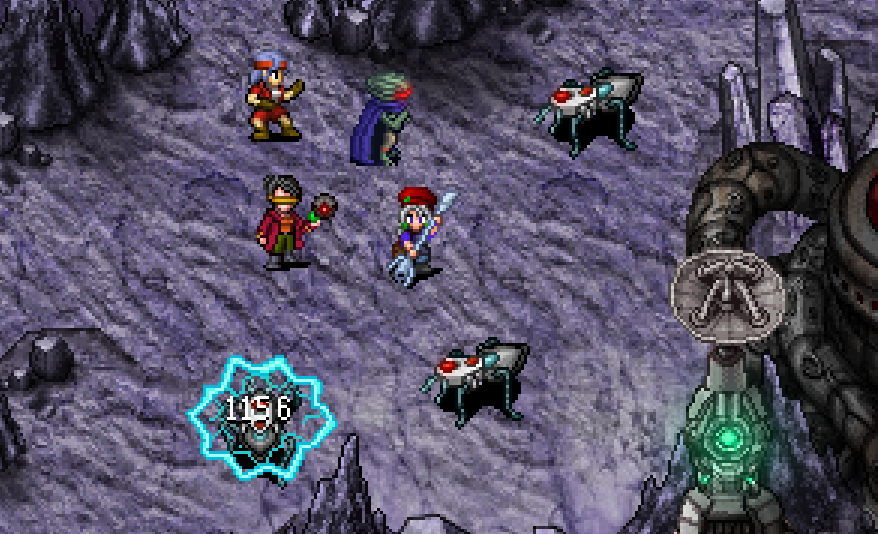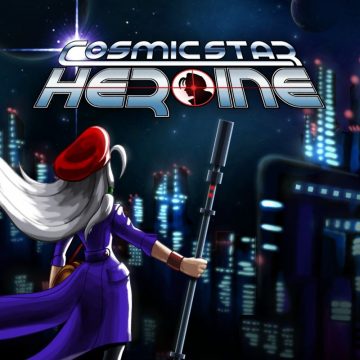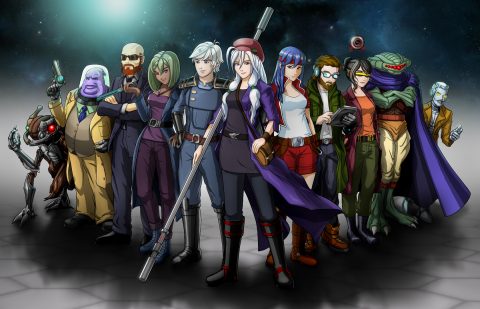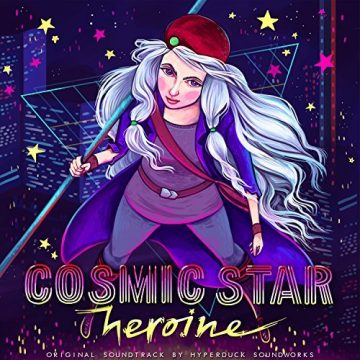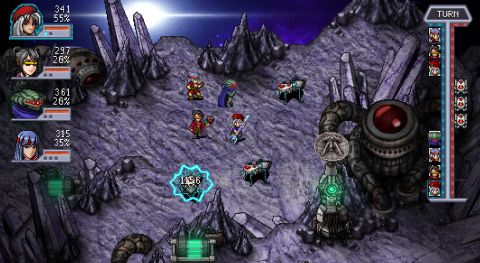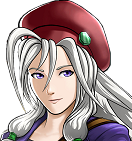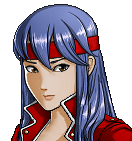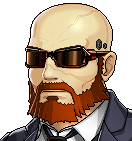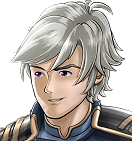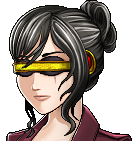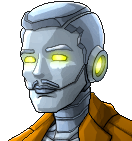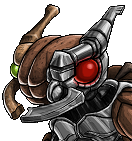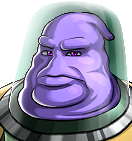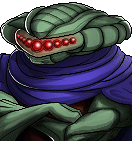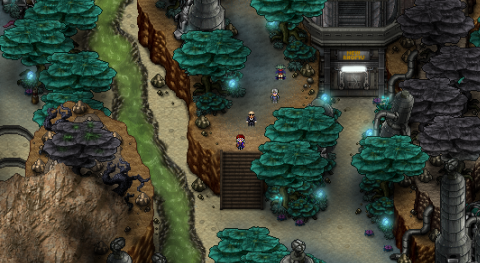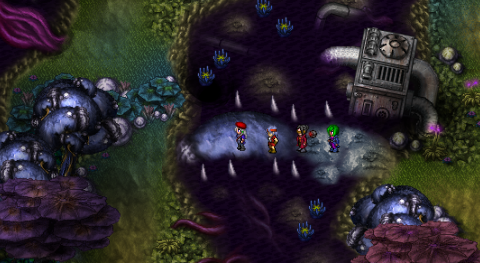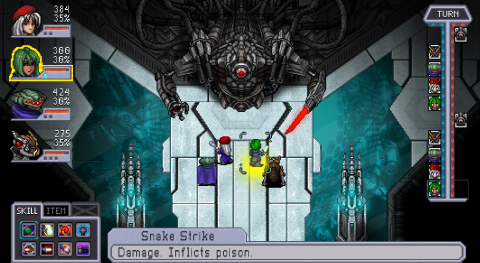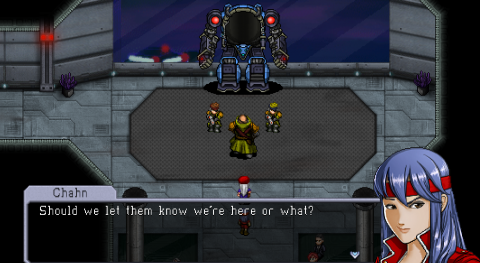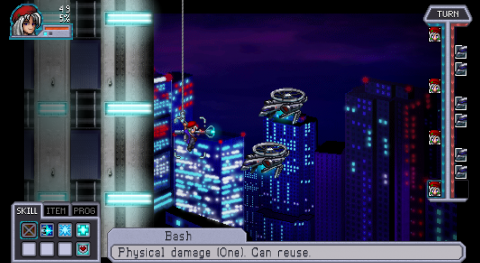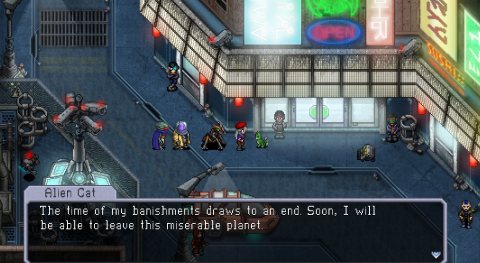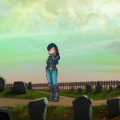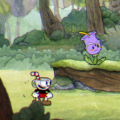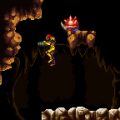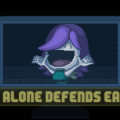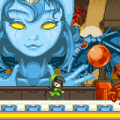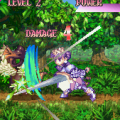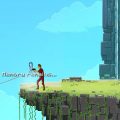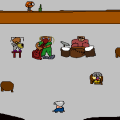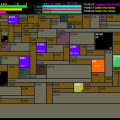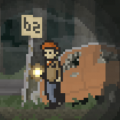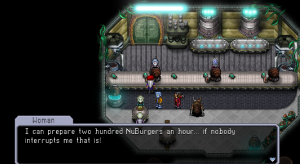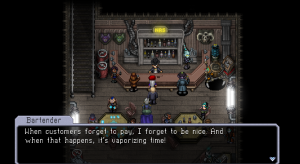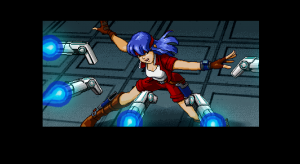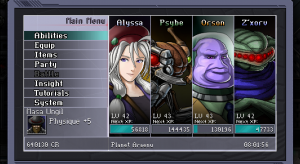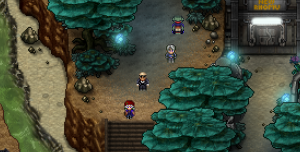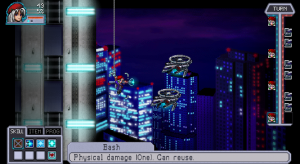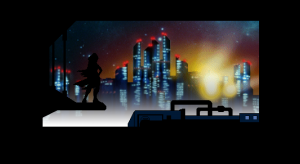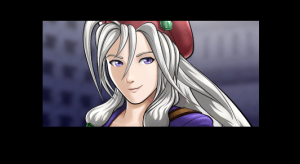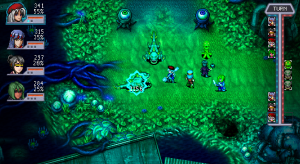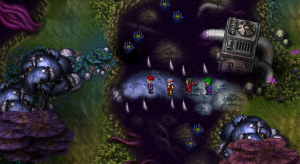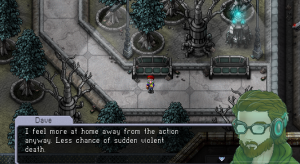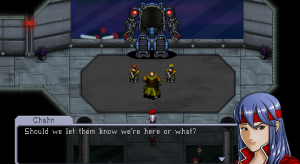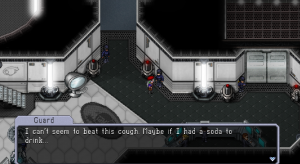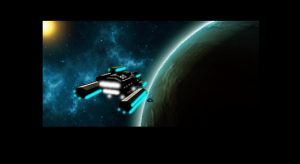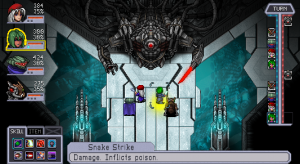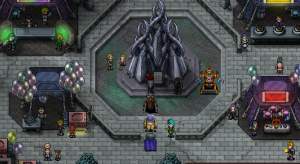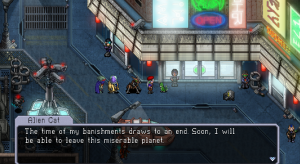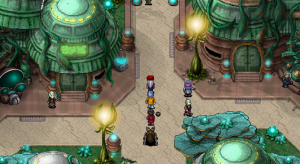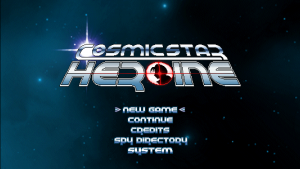Developed by Zeboyd Games, the same team behind JRPG-styled indie games like Cthullu Saves the World and the later Penny Arcade: On The Rainslick Precipice of Darkness games, Cosmic Star Heroine tells the story of Alissa L’Salle, a notorious agent of the Agency of Peace and Intelligence (API), an intergalactic anti-terrorist force. The game is heavily inspired by the likes of Phantasy Star (particularly with its sci-fi setting and female protagonist) but also Square SNES RPGs like Chrono Trigger. More than just being one of the many RPG Maker clones on the indie scenes, it also seeks to expand on what a classic JRPG can be like.
Right from the start, Cosmic Star Heroine clearly wants to tell an epic story. The games opens with Alyssa climbing up a building while fighting enemies and busting terrorists to save a city. These scenes set up Alyssa as a hero that will do anything in her power to save people, a notion that will be her driving force right after her second mission, in which she and her friends Dave and Chahn recover old artifacts that have the power of controlling the minds of people. When they arrive back to the API, they discover that one of their superiors wants to use them to control the world. Who can she trust? Only a few friends.
Characters
Alyssa L’Salle: The main character is a famous intergalactic hero. Alissa is an API agent that takes her job very seriously and is guided by a sense of heroism. Weapon: Cyber-Bo.
Dave: Elite hacker working for the API. He’s very paranoid and somewhat scared of field work, but he’s willing to risk his life for the team. He’s pretty proud of his hacking skills. Weapon: Tablet.
Chahn: Alyssa’s best friend and a valuable API agent. She’s calm and uses gunmancy, the art of summoning and controlling guns with the mind. Weapon: Pistols.
Borisusovsky aka “Sue”: Veteran API agent. Very stylish. He’s quiet and grumpy, but has a soft side. Weapon: Fists, because he’s too badass to use weapons.
Lauren: Government informant with ties to terrorist groups. Chahn’s friend. She also sings in an indie band (and she’s pretty good at it)! Weapon: Daggers.
Finian: Alyssa’s distant cousin. He’s new to the Galactic Agency and is a fan of Alyssa’s work. Joins her quest to learn more about how to be a better agent. Weapon: Shotblaster.
Arete: Leader of a terrorist faction hunted by the API. She is accompanied by a robot eye that helps her in battles and provides her with information. Weapon: Explosives.
Clarke: Robot agent. He really loves to dance and thinks he’s the coolest and most famous guy in the universe… although nobody seems to know who he is. Weapon: Rocket Boots.
Psybe: Alien concerned with the future of the universe. He joins the party to save his race from the dangers that are upon them. Knows a lot about alien technology. Weapon: Claws and his songs (that can blow enemies up or heal the party).
Orson Bolibar: Alien detective. Never leaves the truth uncovered. Weapon: A gun made of spectral energy.
Z’xorv: Alien bounty hunter who does anything to get his marks. He has a cool cape and spits acid. He’s badass. Weapon: Deadly claws.
The story mostly jumps between three planets: Araenu, a highly technological, but unequal planet in which the API headquarters are based; Rhomu, a wasteland planet in which only the strongest survive; and finally Nuluup, a planet filled with forest, ruins and with a strange race of aliens. However, the story is pretty short and straightforward, so you’ll be jumping from planet to planet very quickly.
The game has clear inspirations in the greatest JRPG hits of the 1990s. The developers didn’t make any secret about it and, from the graphics and style to the gameplay, they pretty much nailed the feeling. Every planet and place has a distinct feel and the themes are very ample, but always connected to the larger plot. It also has a pretty light atmosphere and tries to be funny often, fortunately hitting the right tone most of the time. It definitely has a sense of humor that sets it apart from the awkwardly translated and/or truncated English scripts of the 16-bit era. For example, there’s a quest in which you have to bring to an agent a soda, for instance, and after you do it, he gets angry because soda doesn’t make him stop coughing like the advertisements imply.
While the storytelling and characters are likable, the combat in Cosmic Star Heroine is when the game really shines, as it’s clear that the Zeboyd team have played tons of JRPGs and fully understand the ups and downs of turn-based RPG combat systems. There are no random encounters, no grinding, and very few battles that you can win just by hitting “fight” over and over. That means that a majority of the battles are carefully telegraphed, unique matches that require careful thought and strategy. This seemed like this was the original concept with Chrono Trigger, but the generally low difficulty (and otherwise simplistic fighting system) let it down, but here it’s much better implemented.
One of the main unique aspects is the way the ability system works. Every character can equip up to eight abilities, which are gained when they level up. Every one of them has both a basic attack and a defensive action. You can change your basic attack later, as well as the other six ability slots, but you can only swap the defensive action for another defensive action. The twist is that every time you use an ability, you can’t use it again unless you recharge it (except for a very specific ones you can use as often as you want). These can only be recharged by defending, so much of the strategy revolves around figuring out the best point for a particular character to sit around a round of combat to take a breather. This is an excellent use of a defensive system in a JRPG, a genre in which defense is usually an afterthought and you can beat most games without ever using it (or only using it in special occasions like when some boss charges a powerful attack).
The abilities vary in nature, though most of them are focused in damage. Alyssa, for example, can use an attack that gives 250% of the normal damage, but can’t kill an enemy, so he’ll be left with 1 HP. She also has an ability that gives 150% damage, but it’ll go to 300% if the enemy has less than 50% of its health. Some attacks have elemental properties, so they can cause more damage if the enemy is weak against that element (though there’s no elemental resistances). There are the usual array of buffing, healing, and status-inflicting abilities too, plus special abilities like Psybe’s songs, that give damage or heal in their own turns and last until the end of the battle.
Ailments work in an interesting way, too. In most games, it’s determined simply by a random number, with some enemies simply being invulnerable to them. Here, enemies have a resistance level that is attacked and weakened when you use an ability that will inflict an ailment, so all you have to do is keep using them. Some ailments are very useful, like stunning a character for one round, some are not that much, like poison, that doesn’t really do much damage.
Other factors that add to the strategy are the Hyper and Style points. Every character has two or three slots right under their health. Each round, they fill one slot and when they’re all filled, that character enters in Hyper Mode, giving double damage in that round. You can see when every character is going to attack, so you can easily plan to use your most devastating attacks when you get in Hyper Mode. Another important feature is Style. Style is a percentage that increases the damage you can inflict, and it increases when you use your abilities. If you have more than 50% of Style when your HP reaches 0 (in the normal difficulty), you can still stay alive for a last round, in which you can cure yourself (with diminished healing effect) or attack (with increased damage) and die. Characters like Z’xorv have attacks that can make them survive even with negative HP.
While there’s strategy in choosing which abilities you equip, there’s not so much with equipment, even if some weapons have different effects. There is one weapon for Alyssa, for example, that enhances water-based damage and other one upgrades her strength, but while this works in theory, you’ll feel tempted to use the strongest weapon you have after some time, because they change much of the damage you do. More water-based damage is pretty good, but after a couple of hours, you have to leave that weapon behind if you want to give more damage. Armor works better in this case, as you have more options, but they also have this same issue.
It’s also sufficiently challenging too, at least if you play on the third and fourth difficulty, as the first two are too easy. Even if you fail, though, you can just restart the battle from the beginning without any penalty, giving you plenty of room to experiment.
Due to the nature of the encounter system, the story is paced much quicker than most other classic JRPGs, as it’s missing most of their typical bloat, and there’s almost never a moment that’s wasted on doing anything tedious. The game is also fairly short and breezy, with an average playthrough clocking in at about 15 hours. It recognizes that many gamers that grew up with SNES RPGs as teenagers are adults now and might not have the time to sink into an epic game, so the short length actually makes it more approachable.
As a downside, the brief play time means that some of the characters are pretty undeveloped, as in spite of the amusing dialogue, most of the characters (even the villain) are really shallow. In the beginning of the game, it looks like Dave and Chahn are going to be important, but quickly the game puts them aside and present more and more new characters. Some of them barely have any excuse to go with you, like Orson or Clarke, and just tag along for the ride.
Indeed, Cosmic Star Heroine’s biggest issue is that it tries to cramp too much in too little space. There are 11 characters, most of them have about 15-20 abilities in the end of the game. While this is great for variety and you’ll never be without options, there’s simply not enough time or reason to use all of them. Leveling also happens too quickly – sometimes, you level up once per battle, so that makes every level you get even more useless than they generally are in JRPGs. It only really makes a difference when you get a new ability.
Graphically, Cosmic Space Heroine is generally excellent. The pixel art aesthetic is wondrous and the environments are quite varied, with the three planets looking very different from one another. While Araenu, the first planet, has a cool cyberpunk vibe, Rhomu feels like a post apocalyptic jungle and Nuluup is an idyllic forest whose dangers lurk around. There are a wide variety of characters, human and alien, friend and foe. The sprite artwork obviously recalls Chrono Trigger and the SNES Final Fantasy games, but the high color palette and more intricate map design makes it feel more like a lost 32-bit RPG. The only area where the visuals come up short at the cutscenes. There are a ton of them and they aren’t quite on the level as the rest of the game. They recall the stiff animation of Sega CD and TurboGrafx-16 RPGs, but they rely on the “American designer replicating Japanese anime” concept and lack the designs that made the older games so charming. There are a few other quirks too, as some aspects of exploration are a bit clunky though, especially interacting with the environment or talking to NPCs.
The music is composed by HyperDuck Soundworks, who also provided the soundtrack to Dust: An Elysian Tail. Rather than a typical 16-bit chiptune-style soundtrack, it’s a much more elaborate work that recalls the stylings of TurboGrafx-16 and Sega CD RPGs. While those soundtracks were often held back by the size of compact discs (which could hold a little over 70 minutes of audio, assuming the game data size was small), Cosmic Star Heroine’s is more expansive. There over fifty tracks and some are quite long – the battle theme is nearly four minutes in length! In general, the music is very rock oriented, with plenty of guitars and synth, though quite a bit more modern than the sounds used in a typical 90s game soundtrack.
In the end, Cosmic Star Heroine is one of the best indie JRPGs out there. The game is an awesome example of a fast paced, strategically challenging game. It captures the feel of 90s JRPGs very well, in spite of being made by an American developer, though its length is both a positive and negative. For more than just nostalgic JRPG lovers, fans of turn-based battle systems should absolutely play Cosmic Star Heroine, because it’s one of the most well developed ones out there.
